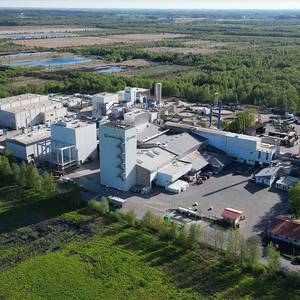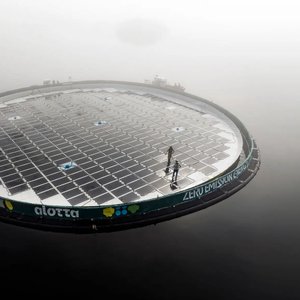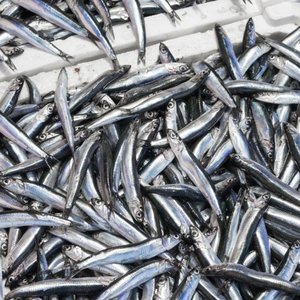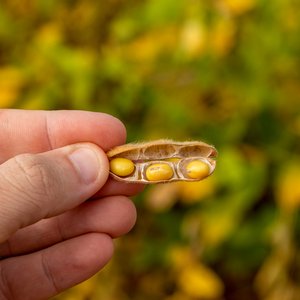Aquaculture is growing more rapidly than all other animal food producing sectors; its contribution to global supplies of fish, crustaceans and molluscs increased from 3.9 per cent of total production by weight in 1970 to 27.3 percent in 2000, according to FAO's State of World Fisheries and Aquaculture 2002 report (SOFIA). The contribution from aquaculture increased further to 29 percent in 2001.
SOFIA, to be presented at the 25th session of FAO's Committee on Fisheries, COFI (Rome, 24-28 February), states that global fish production remains pushed by aquaculture. COFI is the only global technical forum for debating international fisheries issues.
'Aquaculture production, including aquatic plants, reached 45.7 million tonnes by weight and $56.5 billion by value in 2000,' according to SOFIA. 'China remains by far the largest producer with 71 percent of the total volume and 49.8 percent of the total value of aquaculture production.' Global aquaculture production for 2001 showed a further increase to 48.2 million tonnes with a value of $60.9 billion.
Worldwide, aquaculture has increased at an average compounded rate of 9.2 percent per year since 1970, compared with only 1.4 percent for capture fisheries and 2.8 percent for terrestrial farmed meat production systems, according to the report.
Capture fisheries, including marine and inland water production, decreased in 2001 compared to 2000 from 94.8 to about 92 million tonnes; however, all major fluctuations in capture production in recent years are due to variations in catches of Peruvian achoveta which are environmentally-driven (i.e. El Niño), as global capture production -- with the exclusion of anchoveta catches -- has been fairly stable since 1995.
Regarding the global situation of the main marine fish stocks, the report warns that nearly half of world marine stocks offer no reasonable expectations for further expansion. 'About 47 percent of the main stocks or species groups are fully exploited and are therefore producing catches that have reached, or are very close to, their maximum sustainable limits,' the report says.
The report also warns against overfishing on the high seas. It is difficult to assess the situation on the high seas, because reports to FAO of marine catches make no distinction between those taken within the exclusive economic zones (EEZs) and those taken on the high seas. However, the report reveals that catches of oceanic species, particularly the oceanic tunas, almost tripled from 3 million tonnes in 1976 to 8.5 million tonnes in 2000.
Marked differences in consumption
More than 1 billion people worldwide rely on fish as an important source of animal proteins. However, marked regional differences in consumption are reported. Of the worldwide 95.5 million tonnes of food fish available for consumption in 1999, only 6.2 million tonnes (6.5 percent) were consumed in Africa.
SOFIA also indicates that 'about 56 percent of the world's population derives at least 20 percent of its animal protein intake from fish, and some small island States depend on fish almost exclusively'.
The report informs on ongoing attempts to predict fish production and consumption. According to projections, by 2015-2030 world capture production will stagnate, while world aquaculture production will continue to increase and will be dominated by freshwater species and molluscs .
According to economic modelling, global annual consumption of fish per person will increase over time, from about 16 kg today to between 19 and 21 kg in 2030.
But the regional picture will be very diverse. Fish consumption per person is projected to increase by more than 84 percent in China, by almost 60 percent in South Asia and by almost 50 percent in Latin America and the Caribbean. In other regions, it may stagnate or decline. In Africa, where the consumption already is low, it may go down by a further 3 percent.
Commenting on consumption patterns, the report indicates that in many parts of the world changes reflect increased health consciousness and a stronger demand for ready-to-cook or ready-to-eat products. The emergence and growth of supermarkets' sharesin the distribution of seafood will continue to facilitate a greater penetration of seafood products in areas that are remote from the sea.
World trade
According to FAO' report, total world trade of fish and fishery products increased to an export value of $55.2 billion in 2000.
Thailand continued to be the main exporting country, with $4.4 billion. China experienced a sharp increase in its export performance to reach $3.7 billion in 2000 and is now the second largest exporter.
Norway lost its second rank due to lower salmon prices and euro fluctuations - the currency of the main trading area for Norwegian fish.
Fish imports reached a record of $60 billion in 2000. Developed countries accounted for more than 80 percent of the value of the total fishery product imports. Japan was again, the largest importer of fishery products, accounting for some 26 percent of the world total.
The State of World Fisheries and Aquaculture is available from FAO sales agents world-wide or directly from: FAO Sales and Marketing Group, Publishing Management Service, Information Division
Food and Agriculture Organization of the United Nations
Viale delle Terme di Caracalla, 00100, Rome, Italy
On-line catalogue:
E-mail for orders and queries: Publications-Sales@fao.org
Advertisement










